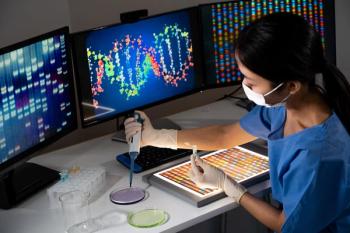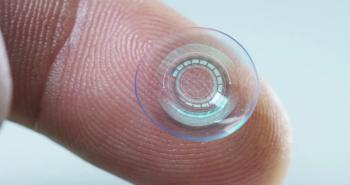
My refractive surgery journey as surgeon and patient
My interest in refractive surgery started in 1976 when my good friend and fellow University of Southern California (USC) ophthalmology resident Rick Villaseñor returned from his course in keratomileusis surgery with Jose Barraquer in Bogota, Columbia.
My interest in refractive surgery started in 1976 when my good friend and fellow University of Southern California (USC) ophthalmology resident Rick Villaseñor returned from his course in keratomileusis surgery with Jose Barraquer in Bogota, Columbia.
Rick was very excited about this surgery, and after he explained what he learned my interest was also stimulated. Fortunately, we were both on the voluntary attending staff at USC under the direction of Drs. Steve Ryan and Ron Smith. We discussed the very complicated keratomileusis surgery with them and asked for their assistance in studying the procedure as a research project at the Doheny Eye Foundation.
Early days of refractive surgery
With the support of Drs. Ryan and Smith, we obtained access to the Doheny research lab where we met every Friday for over a year. Somehow we were able to obtain funding to purchase a cryolathe and a Barraquer microkeratome. The Doheny lab had a Terry keratometer, and we had access to cadaver eyes from the Doheny Eye Bank. Dr. Villaseñor also eventually purchased a cryolathe for his own practice.
Keratomileusis was an incredibly complex procedure which involved obtaining a free cap of cornea with the manual microkeratome, placing it on the cryolathe, then reshaping the cornea to correct myopia by shaving off the proper number of microns of corneal tissue and suturing this lenticule back on the cornea.
It involved calculations with a Texas Instruments calculator (this was before the invention of computers). We had to follow a detailed manual and audio tape outlining about 60 steps to accomplish the surgery. We practiced on cadaver eyes for over a year before actually operating on patients, but we eventually performed a few cases of myopic keratomiluesis and keratophakia.
In the late 1970s, radial keratotomy (RK) was introduced in the United States by Dr. Leo Bores. This was a much simpler procedure to reduce myopia, so we began to study it in the laboratory in cadaver eyes by monitoring the changes in the cornea following RK incisions with the Terry keratometer. Dr. Smith also allowed us to performs the RK procedure on monkeys he was using to study histoplasmosis in their retinas.
This led to a series of publications and presentations about RK in peer-reviewed journals and major eye meetings.1-8 USC was selected as one of the Prospective Evaluation of Radial Keratotomy (PERK) centers, and Rick and I were PERK surgeons. After the PERK patient enrollment was completed, we began performing RK and astigmatic corneal incisions on private patients.
My refractive surgery procedure
One day, one of my prospective RK patients said, “If this surgery is so great, why are you wearing glasses?” Excellent question, I responded, and I will consider it.
At the time, I had minimal astigmatism in my right eye, but my left eye had uncorrected visual acuity of 20/200 and my refraction was: +1.50 -4.00 D x 180. Because arcuate incisions flatten the steep meridian and steepen the flat meridian, I was a perfect candidate for arcuate incisions. Theoretically, paired arcuate incisions should result in a near emmetropic result without RK incisions.
Rick Villaseñor also had mixed astigmatism, so one day after perhaps too many margaritas, we decided we would operate on each other to eliminate our glasses-we would be able to tell patients we had the procedure ourselves. So we scheduled our surgery at Rick’s surgery center a few days apart.
Because I did not want to flip my astigmatism, I had Rick first make one pair of arcuate incisions and analyze the effect. He added another pair four weeks later when the refraction was stable. My topography showed symmetrical with-the-rule mixed astigmatism in my left eye, and I was an excellent candidate for arcuate keratectomy.
My uncorrected vision improved to 20/30, and for over 10 years I was in refractive heaven with excellent uncorrected visual acuity in both eyes.
Changes over time
Just as RK incisions can have a progressive effect over time, resulting in continued corneal flattening and hyperopia, arcuate incisions can also have a progressive effect. So 30 years after my AK surgery, my UCVA was back to 20/200, and my astigmatism was now 2.00 D against the rule with a refraction of +1.25 – 2.25 x 90. My map showed asymmetric astigmatism, steeper below, so it resembled a pellucid marginal degeneration (Figure 1).
I would eventually require cataract surgery, and I knew I would not be a candidate for a toric lens implant with my warped corneal shape. So I emailed my map to Dr. David Lin in Vancouver.
David is one of the leading experts in topography-guided photorefractive keratectomy (PRK). I also happened to be his proctor when he first started his career in laser vision correction with the VisX laser after a fellowship with Dr. Marguerite McDonald at Louisiana State in New Orleans.
After reviewing my topography and refractions, David said I was a good candidate for topography-guided PRK with the Schwinn laser system. I spent two days in Vancouver, and David performed the surgery. I told him I wanted to have mild monovision because he was operating on my non-dominant eye. After reviewing my records, he told me we could try to set my postop K readings at about 49.00 D, which should leave me between -1.00 D and -1.50 D.
The topography-guided PRK was performed with the transepiithelial approach, which took approximately 40 seconds, while the stromal portion took about 12 seconds (Figure 2). There was no discomfort, and believe me, I did not move my eye even 1.0 mm while looking at the fixation light. The video looks like a PRK on a dead person!
We tell patients they will experience a faint smell like a burning hair. That’s because the surgeon is a couple of feet away from the cornea. When you experience it as a patient with the plume next to your nose, you think your eye is cooking.
David also applied mitomycin C. My partner Dr. Barry Seibel removed my bandage contact lens five days postop, and my postop course was uneventful with no corneal haze.
Initially, my refraction was about -4.00 D, but in a few weeks it was down to -2.00 D. At one year, my refraction was -1.25 D. My final K readings were near 49.00 D just as Dr. Lin had predicted (Figure 3).
Moving on to cataract surgery
Now that I had a near spherical cornea with topography that looked like hyperopic PRK, the next challenge was to remove my cataract because my vision had decreased to 20/40-.
Dr. Seibel had removed my right cataract seven years earlier, and it was time to plan the surgery on my left eye. I decided I wanted a monofocal lens targeted for monovision of between -1.00 D and -1.50 D. I had corneal measurements which showed four different amounts of astigmatism (Table 1), and the Pentacam showed over 1.00 D of posterior astigmatism.
I consulted with my friends Dr. Jack Holladay and Dr. Dough Koch. Because of the uncertainty of the keratometer readings, we used the ASCRS post hyperopic PRK or LASIK formula, and we had both a toric lens and a monofocal lens available. The plan was to use a toric if ORA readings revealed consistent astigmatism and a monofocal if the readings were variable. We could not obtain consistent readings, so we chose a monofocal implant, targeted for monovision of about -1.50 D.
Dr. Seibel also used the Catalys Femtosecond laser system to create a 5.3 mm rhexis and pre-divide the nucleus into sextants (Figure 4).
I am happy to report that six months postop, my UCCA is 20/100, near vision is J3, and my refraction is -1.25 D. Although I can function quite well without glasses, I still wear progressive lenses most of the time.
So, when discussing LASIK and premium cataract surgery with patients, this question still comes up. “If this surgery is so great Dr. Salz, why are you wearing glasses?”
References
1. Salz JJ. Clinical results of radial keratotomy in human cadaver eyes. Radial Keratotomy. Los Angeles: Denison, 1980. 133-143.
2. Salz JJ, Rowsey JJ, Caroline P, Azen SP, Suter M, Monlux R. A study of optical zone size and incision redeepening in experimental radial keratotomy. Arch Ophthalmol. 1985 Apr;103(4):590-4.
3. Salz JJ, Lee T, Jester JV, Villaseñor RA, Steel D, Bernstein J, Smith RE. Analysis of incision depth following experimental radial keratotomy. Ophthalmology. 1983 Jun;90(6):655-9.
4. Salz JJ. Pathophysiology of radial keratotomy incisions. Refractive Surgery: A Text of Radial Keratotomy. Ed. Sanders D, Hoffman R. Thorofare, NJ: Slack, Inc. 1984. 73-85.
5. Salz JJ. Four-incision radial keratotomy for low to moderate myopia and eight-incision radial keratotomy for high myopia. Radial Keratotomy Surgical Techniques. Thorofare, NJ: Slack, Inc. 1986. 5-34.
6. Salz JJ, Fasano A. Indications, techniques, and results of a conservative approach to radial keratotomy. Current Practice in Ophthalmology. Ed. Schachat A. St. Louis: Mosby. 1992.
7. Waring GO 3rd, Arentsen JJ, Bourque LB, Gelender H, Lindstrom RL, Moffitt SD, Myers WD, Obstbaum SA, Rowsey JJ, Safir A, et al. Design features of the prospective evaluation of radial keratotomy (PERK) study. Int Ophthalmol Clin. 1983 Fall;23(3):145-65.
8. Salz JJ. Radial keratotomy in fresh human cadaver eyes. Presentation at: American Academy of Ophthalmology annual meeting; 1980 November. Chicago.
Newsletter
Want more insights like this? Subscribe to Optometry Times and get clinical pearls and practice tips delivered straight to your inbox.















































